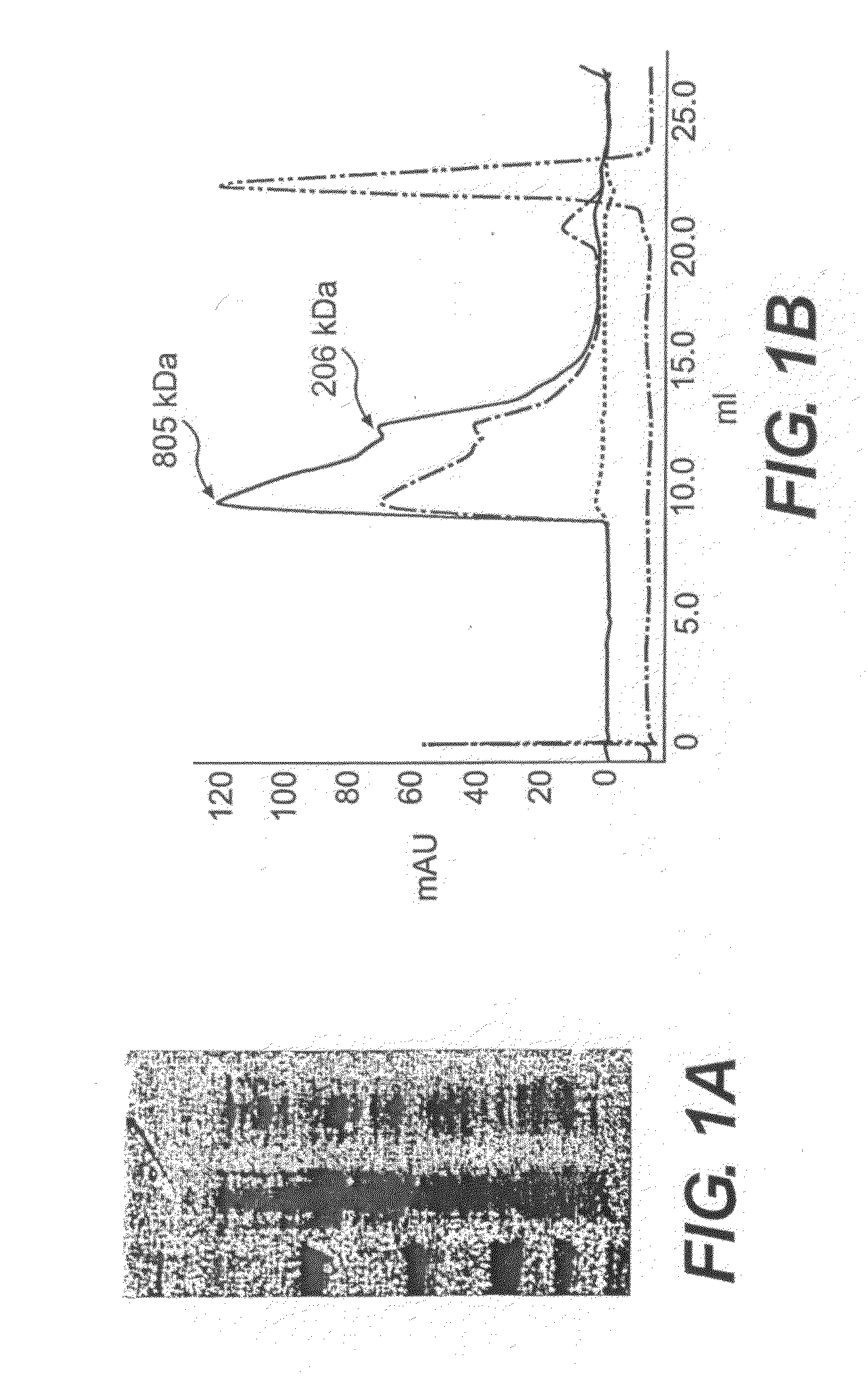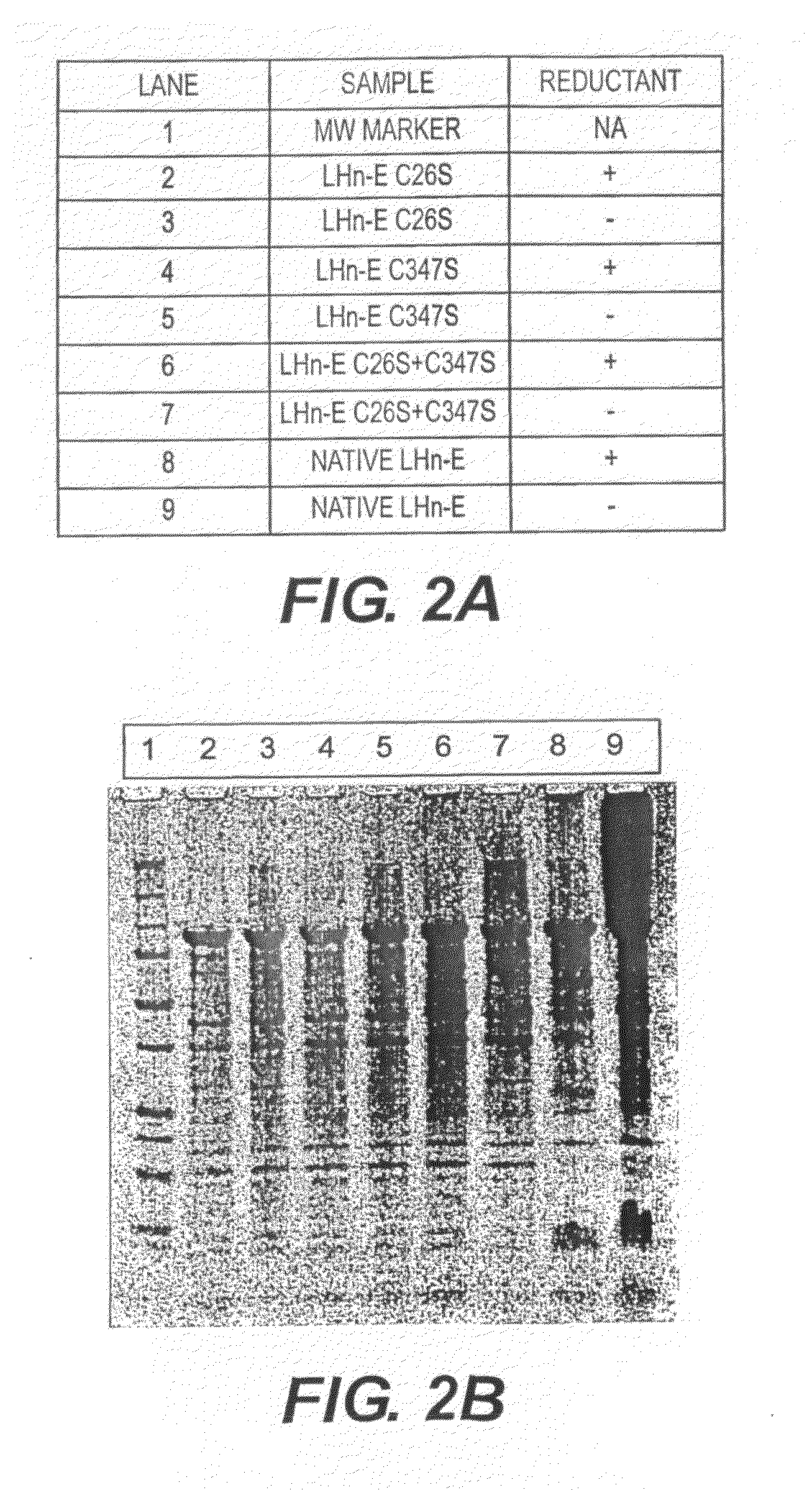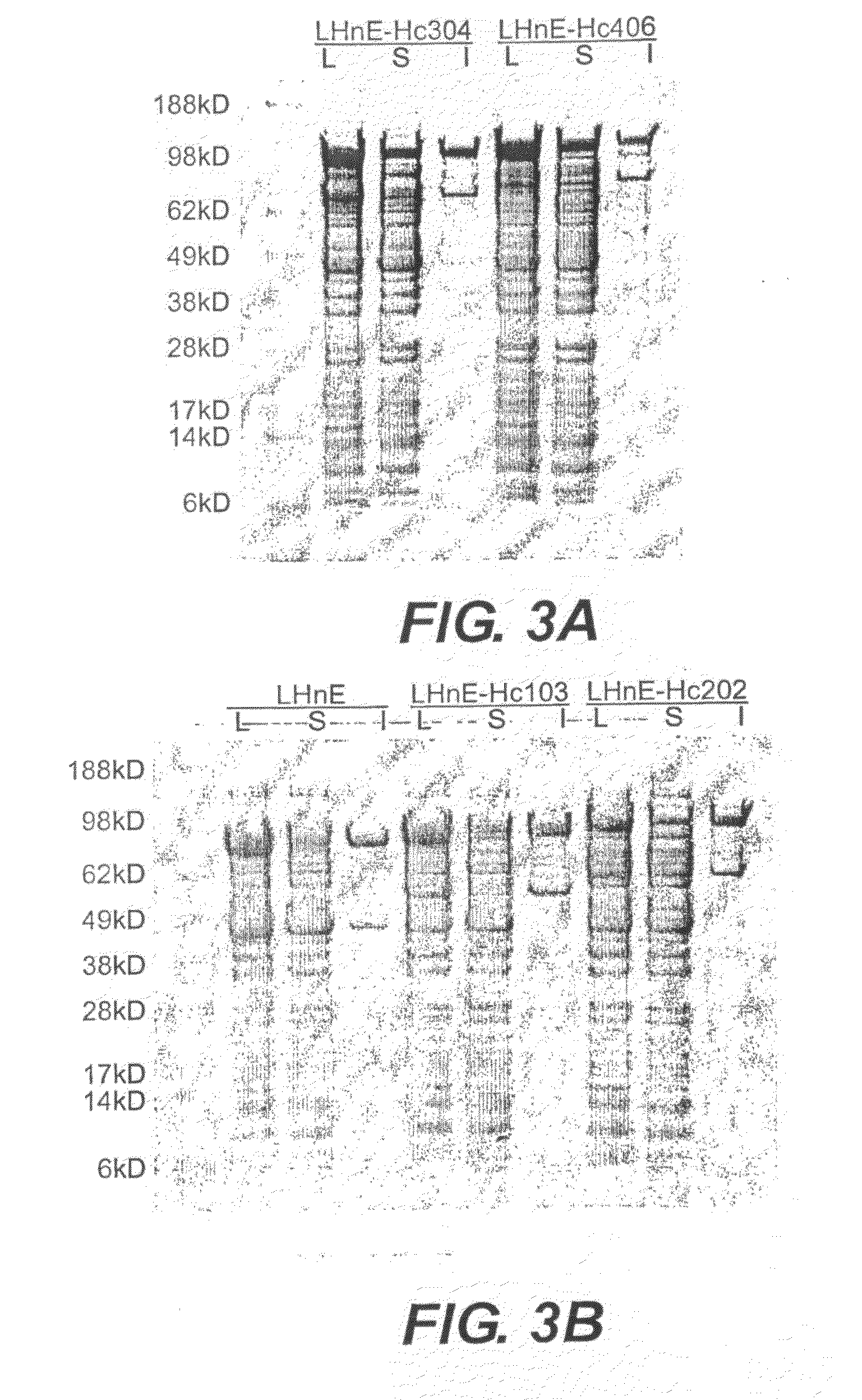Proteins with Improved Solubility and Methods for Producing and Using Same
- Summary
- Abstract
- Description
- Claims
- Application Information
AI Technical Summary
Benefits of technology
Problems solved by technology
Method used
Image
Examples
example 1
Site-Directed Mutagenesis of LHN / E to Remove One or More Cysteine Residues
[0162]Endopeptidase-ablating mutations (E213Q and H216Y relative to SEQ ID NO: 1 and SEQ ID NO: 2) were introduced into the LHN / E coding sequence and the resulting cassettes cloned into plasmid vector pET26b. Various E. coli host strains were transformed and assessed for the ability to direct expression of a rLHN / E fragment. While high levels of target protein could be produced, recombinant LHN / E was expressed in all hosts as high molecular mass aggregate (FIGS. 1A and 1B). Those SDS-PAGE and gel filtration studies conducted under reducing and non-reducing conditions showed that LHN / E aggregation results, at least in part, from intermolecular disulfide bond formation.
[0163]It was hypothesized that aggregation could be due to the formation of cysteine-linked disulfide bonds between multiple LHN / E polypeptides. Molecular biology approaches were pursued to increase expression of soluble, non-aggregated rLHN / E pro...
example 2
Extending the LHN / E Fragment with Hc Sequence Improves Solubility
[0167]The solubility of clostridial neurotoxin proteins can also be enhanced by creating proteins in which an LHN domain, or a fragment of an LHN domain, is expressed along with amino acid sequence from an Hc domain.
[0168]Recombinant truncated forms of the botulinum serotype E toxin, such as the LHN fragments, have proven difficult to produce (express) and purify due to low solubility. Even at low concentrations, insoluble forms are often expressed in a non-native multimeric and aggregated state which renders them poor immunogens and unable to elicit protective levels of toxin neutralizing antibodies. To address this issue and enable the production of soluble (and possibly monomeric) protein, recombinant derivatives of the LHN / E protein have been produced that carry various lengths of the adjoining Hc domain.
[0169]The following expression constructs were tested for protein solubility in the E. coli strain ER2566: LHN / E...
example 3
Immunogenicity of LHN / E Cys to Ser Fragments and LHN / E-Hc Fragments
[0175]Abolishing the ability of LHN / E to form aberrant intermolecular disulfide bonds by replacing cysteine residues with amino acids that do not form disulfide bonds and extending the LHN / E fragment with Hc sequence are two techniques that improve the yield of monomeric or less aggregated protein. These modifications will enhance the immunogenicity and protective efficacy of the LHN / E fragment and the enzymatic activity of non-endopeptidase ablated toxins and toxin subfragments.
[0176]Immunogenicity of the recombinant proteins is tested in mice. Mice are immunized either with 10 μg of a LHN / E protein in which one or more cysteine residues has been replaced with another amino acid that does not form disulfide bonds, with 10 μg of a LHN / E protein that has been extended by inclusion of Hc sequence, with 10 μg of inactivated BoNT / E, or with other proteins described in the Examples. The proteins are suspended in an adjuva...
PUM
| Property | Measurement | Unit |
|---|---|---|
| Solubility (mass) | aaaaa | aaaaa |
| Pharmaceutically acceptable | aaaaa | aaaaa |
| Exposure limit | aaaaa | aaaaa |
Abstract
Description
Claims
Application Information
 Login to View More
Login to View More - R&D
- Intellectual Property
- Life Sciences
- Materials
- Tech Scout
- Unparalleled Data Quality
- Higher Quality Content
- 60% Fewer Hallucinations
Browse by: Latest US Patents, China's latest patents, Technical Efficacy Thesaurus, Application Domain, Technology Topic, Popular Technical Reports.
© 2025 PatSnap. All rights reserved.Legal|Privacy policy|Modern Slavery Act Transparency Statement|Sitemap|About US| Contact US: help@patsnap.com



